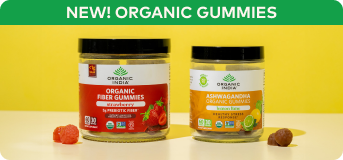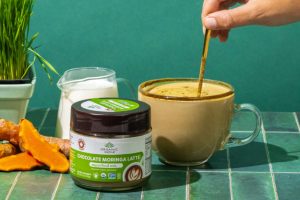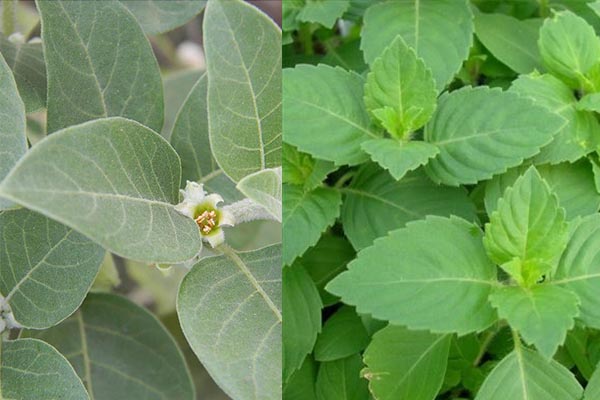

Section

Back
Both Tulsi and Ashwagandha are Ayurvedic herbs with broad-spectrum health properties — both have been cultivated and used for thousands of years. When used together, each complements the other.
The Vedics value Ashwagandha, or Withania somnifera, the plant’s Latin name, for its longevity properties, and believe that this herb harmonizes and rejuvenates mind, body, and spirit. Vedic texts note that Ashwagandha has benefits for the nervous and endocrine systems, which may account for why it is used to calm anxiety. The plant is used as against inflammation and as a general rejuvenation tonic as well.
Tulsi, also called Holy Basil, is said to promote whole body well-being. Ayurvedic literature describes Tulsi, or Ocimum sanctum, as protecting the body from prolonged over-exertion, cold temperatures, and loud noises. The Journal of Ayurveda and Integrative Medicine calls it “an herb for all reasons,” stating,
“Of all the herbs used with Ayurveda, tulsi is preeminent and scientific research is now confirming its beneficial effects.”
The article goes on to state that Tulsi has been observed to protect the body from heavy metals and industrial pollutants, normalize blood glucose and blood pressure, and improve memory and cognitive function.
Traditionally, Tulsi has been used to ease sore throats, relieve nausea, and improve skin diseases.
Tulsi + Ashwagandha
Both Tulsi and Ashwagandha are adaptogens, meaning “a natural substance considered to help the body adapt to stress and regulate the systems of the body,” according to dictionary.com.
In Ayurvedic medicine there is a principle stating that substances with similar properties are “sympathetic” to each other, meaning they work well together. Both are said to protect the body from environmental stressors, have anti-inflammatory characteristics, and be beneficial tonics for general well-being.
One veterinary study found that when baby goats were given a combination of the two, they grew to 11.5 kg, compared to a group receiving only normal feed, which grew to 7.37 kg. in the same time span. In conclusion, these two beloved plants may be better together.
Disclaimer: This content is not intended to provide diagnosis, treatment or medical advice. Content provided on this site for informational purposes only.






